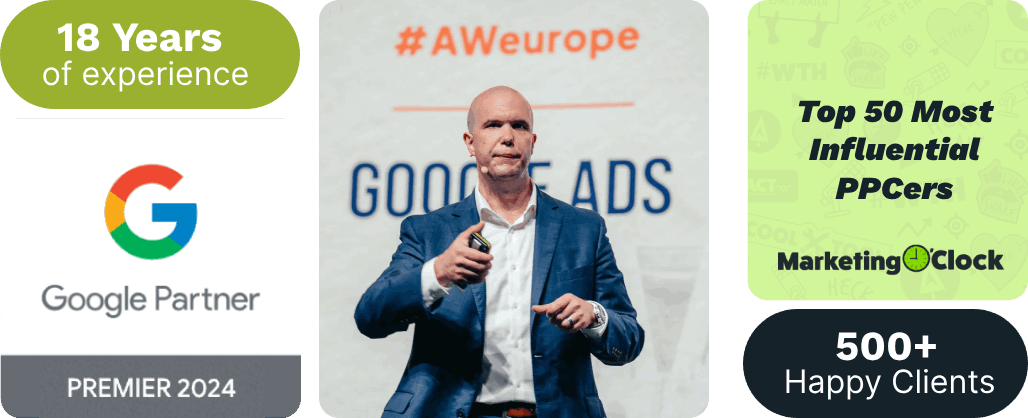An estimated five billion people have used social media at some stage. Many of you currently use Meta for recreational and business purposes, so there is every chance you’ve seen an ad or two on various Meta platforms.
Paid social platforms can be complex fields to navigate, and since the playing field is constantly changing its parameters, we’d like to give you a simplified overview that can help you make your campaigns reach their full potential.
Whether you are well-versed in the scope of Meta or just finding out what it can do for your business, we hope this article can give you an insight into the platform.
What Is Meta Ads?
Meta Ads, formerly Facebook Ads, is an effective way to build brand awareness and connect with customers. It’s where you can get customers to sit up and take notice of your creative ads on Facebook, Instagram, Messenger, and Meta Audience Network.
Digital marketing has incredible boosting power when trying to get your business name out there. Your products and services get maximum exposure thanks to the far-reaching influence of Meta Ads.
What Are The Benefits Of Using Meta Ads?
The benefits of Meta Ads are widespread and indisputable.
The Meta platform aims for highly detailed audience segmentation. It has a subtle approach, sliding into a user’s social feeds naturally and effortlessly. Its visually engaging content shows images and tells a story. There’s a mass appeal in getting people to interact at a social level.
The potential to scale your business with Meta Ads is strengthened by these three cornerstones:
- The opportunity to share creative helps clients find sources of hidden revenue which will boost click-through rates (CTRs) and increase return on ad spend (ROAS) and media efficiency ratio (MER)
- Timing: If your message reaches the right people at the right time, you are guaranteed to optimize and increase conversions to capture more sales
- Brand awareness allows clients to grow their list of customers, which will drive website traffic; leads and sales are inevitable
We cannot discuss benefits without venturing into the realm of ad costs and budget.
Meta Ads uses a bidding system wherein costs are influenced by factors such as audience targeting, ad format, and campaign objectives. Advertisers can choose between different bidding strategies, such as cost per click (CPC) or cost per impression (CPM).
Cost dynamics differ based on chosen metrics and campaign goals.

Generally, Meta Ads can produce cheaper CPCs compared to other platforms. Endless possibilities to create riveting ads that truly speak to your audience and a well-managed campaign strategy mean the platform drives cheaper CPCs.

Another significant benefit needs mentioning. It is more common to create multiple standalone ads and carry out testing on one ad before moving to another. Regular A/B testing pushes the top-performing ads to the fore without having to constantly run new ads on the uneven playing field of the platform itself.
How Does It Work?
On the surface, it’s a user-friendly model for everyone, but advanced knowledge of Meta Ads and its inner workings can launch your business into the stratosphere. That’s where a digital agency like Solutions 8 makes a huge difference to your strategy. We know the shortcuts and we have the map. We’ve been doing this for a long time.
The Meta ecosystem has become a very efficient one-stop shop for advertising. Even their catchphrase is self-fulfilling:
Your customers are here. Find them with Meta Ads.
That’s a winning formula right there, don’t you think? The name of the game is to FIND NEW CUSTOMERS! And Meta Ads will help you convert them to paying customers.

It’s where one can share creative across all Meta platforms including Facebook, Instagram, Messenger, and WhatsApp. Creative does the heavy lifting so to speak. A catchy hook in written or visual form can take off like wildfire, turning any business into a success story.

There are endless options to explore in the Meta world: Video Ads, Image Ads, Carousel Ads, Collection Ads, and Catalog Ads. Think of the fun you can have in creating something of lasting value. Go on! The only thing stopping you is your lack of imagination.

Source: Meta ads
All ads are managed in one place with Meta Ads Manager, giving you total control of when and where your ads will run. You can track all campaigns here, too.
Once your ads are up and running, you can see which ones are performing best and act accordingly. It will depend on business goals and Pixel setup.
Pixel is an analytics tool that helps you measure how effective your Meta Ads campaigns are by monitoring the actions people take on your website.
When it’s set up properly, we can track events such as sales, lead form submissions, emails, phone calls, and anything else you’d like to monitor on your website.
This entire operation opens up the reporting window, which connects us to the valuable data for your business. From there, we can visualize the effectiveness of your advertising campaigns.
You can view all advertisements in the aptly named Meta Ads Library. With its enormous influence over social media platforms, a single resource center that shows all ads running simultaneously within Meta Ads makes a lot of sense.
Managing your budget lets you start, stop, and pause your ads at any time to get the most out of your investment. There are two options for budget allocation and these are lifetime budget and daily budget.
The lifetime budget puts Meta in the driver’s seat and is ideal for smaller monthly budgets.
The daily budget option gives you more control over when to spend your money. It will be treated as an average daily budget, not a maximum one. So, while Meta Ads may spend up to 25% more of the daily budget on any single day, it doesn’t spend more than seven times the daily budget over a full week.
One advantage of using Meta Ads in such a fierce market is that it can help save money in fighting for competitive and overpriced keywords. By giving you tools like custom audience targeting, multiple ad formats, and targeted placements, your strategy to win over users you know are likely to convert is easier to streamline.

Omnichannel marketing is the last key point that defines Meta Ads marketing strategies. When each marketing channel helps the other create an overall marketing strategy, the sky’s the limit.
Infinite possibilities come alive with this symbiotic collaboration, and the customer wins by buying something they didn’t even know they wanted. There is no escape.
How Does It Differ From Google Ads?
When people scroll through their Facebook and Instagram feeds, they aren’t necessarily looking for ads. Most people want to see stories about their friends and family.
They are not intentionally looking for a product or service. This is the fundamental difference between Meta Ads and Google Ads.
The campaign objectives for Meta Ads are slightly different compared to Google Ads. The two platforms have their practical uses and unique strengths but, in the end, it will depend on individual client situations and aims.
Google Ads has an advantage in understanding customers’ immediate intent because it targets users based on the keywords they’ve been searching. Ads appear when users are actively searching for relevant information or products.

Meta Ads will build better brand awareness. This gives Meta Ads a competitive edge over Google Ads simply because Facebook is the busiest social media platform. It reaches a vaster audience and that basic fact cannot be ignored.
The targeting options of Meta advertising also outweigh those of Google Ads. A target audience in the Meta world is worth its weight in gold. It goes beyond the standard demographics used by Google Ads.
Targeting potential customers based on various aspects such as life events, interests, who they follow, and buyer profiles, Meta Ads makes a far greater impact, often touching a personal chord of the individual.
Google Ads might be marginally better at making a conversion and closing a sales deal straight away. While sales are EVERYTHING, never underestimate the slow and steady power of a good brand buildup! Over the long haul, that’s where we will find results.

Using Meta Ads can also get a lot of cold traffic to your website without breaking the bank.
Sometimes the best plan might be to rely on both Meta Ads and Google Ads as a team, to push a strategy onward to success. Let’s elaborate on that.
Some Examples
If you have an eCommerce store that sells directly to consumers, using Meta Ads is a good idea.
If you have a service-based business, Google Ads may serve your needs more effectively.
Then there is that wonderful in-between which could work for any number of small or big businesses, with either a limited budget or not.
It all depends on what the client’s objectives are:-
- Who is your audience?
- Where are they in their buying journey?
- What is your offer?
- What is your goal?
A dynamic duo move might be to use Meta Ads to drive cold traffic to your site and warm up your audience, and then use Google Ads to remarket your products!

There’s no golden ratio on how much should be spent on each platform. Instead, we analyzed our clients who use both and then questioned the following:
- How much traffic is coming from Meta Ads and Google Ads
- How much they spent on Google Ads
- How much ROAS they have for Google
If you’ve been following Solutions 8 over the last few years, you’ll have heard us say Google Analytics isn’t always accurate. Please remember conversions are not attributed to the clicks from Google Ads at all times.
So. Without further ado, here are some great examples to help understand how Meta Ads and Google Ads work harmoniously to the advantage of our clients’ businesses.
Example #1
We have a jewelry company. Google paid traffic is a mere 3% compared to Meta paid traffic, which is a whopping 70%. Ad spend for the month of October is $3,309.24 with a ROAS of 274.31%.

Though they sell jewelry, this company is in a niche market because it sells religious jewelry. That’s a specific and solid community to tap into. What’s more, they are hitting their ROAS goals.
They are spending more money on Meta Ads and since it’s growing and profitable, we’re not going to change anything for now. It’s a great example of how Meta is serving this niche market perfectly well.
Example #2
Our next example is a company that sells hats, specifically for curly-haired people. The product is quite selective, and the company needs more awareness seeing as it’s not a common item.

With Meta paid traffic at only 8% and Google paid traffic hovering at around 30%, the client is not fully satisfied with the results from Google Ads.
Even though ROAS is at 134.22%, which means it’s profitable, we suggest the ad spend be increased on Meta Ads. Spending less on Google Ads might be the best strategy to make their MER right.
Example #3
Our next company sells furniture. In October 2022, they were not using Meta Ads, while their Google Ads paid traffic was 85.04%. Being a furniture brand, Meta is not advised because it is not considered an impulse buying product.

There’s an impressive ROAS of 459.24% but you might be surprised to learn that is not very high for a furniture company.
Spending money on Meta Ads will help get more traffic to their website if some of their products are “impulse buy” items. They can then be remarketed to any users to increase conversions through Google Ads.
For the benefit of your company, let’s imagine you have similar products. It is highly advisable in that case to test and gather data to find out if Meta Ads is the right solution for you.
Example #4
Once again we have a furniture company, this time dealing in high-end furniture. Facebook traffic was nonexistent for this client in 2022, but Google paid traffic was a hefty 87.41%.

The huge ROAS of 432.86% is not ideal in this case either. A good ROAS for furniture or any similar product is around 700%, especially when it comes to high-end furniture.
Is running Meta Ads a viable solution for this company? Even if people did find their way to the website, just how many would convert once they see their prices?
An alternative solution is to teach Meta’s algorithm to find the right people and show them the ads. Though it may take more time and investment, Meta Ads would certainly move the needle in the right direction.
Example #5
Last but not least, our spotlight product is outdoor gear for camping and hiking. Meta Ads is not part of the campaign strategy but it should be.
ROAS is a low 37.89%, which is a strong indication that running Google Ads alone is not working.

Camping gear is a possible ‘impulse-buy’ product. As soon as people see an ad, Meta Ads could influence their decision to buy, which in turn moves the needle toward conversions.
Further actions must be taken within Google Ads, but the client would see immediate benefits by running Meta Ads.
And there you have it. A quick rundown of Meta Ads for clients who want to know more about getting the best results for their business. We hope it has been helpful. For more, check out our Solutions 8 service page.
Author
Jani is a copywriter at Solutions 8 with a passion for short stories, dancing under the stars, and 80s pop music. Her soul’s purpose is to turn herself into a masterpiece. Her future is filled with green fields, flowers, sunshine, and poetry.
 Jani Kahukiwa
Jani Kahukiwa










